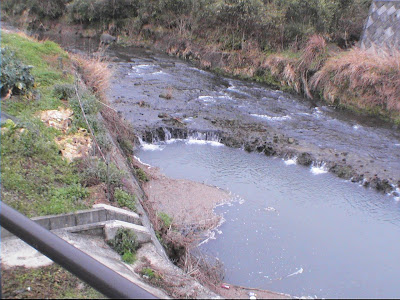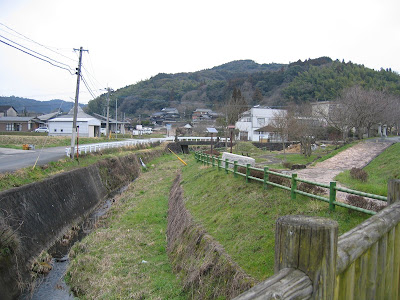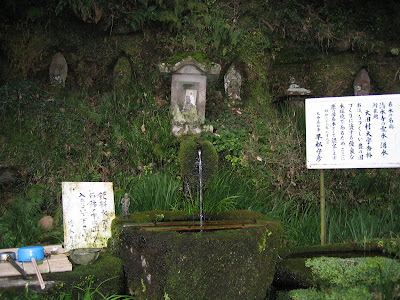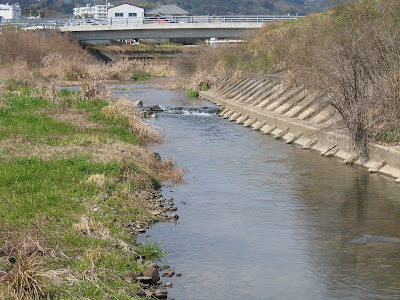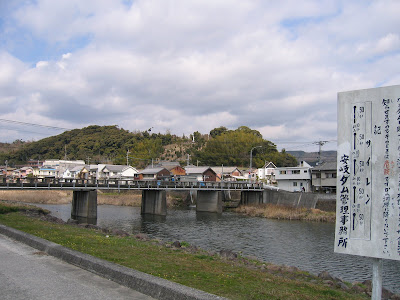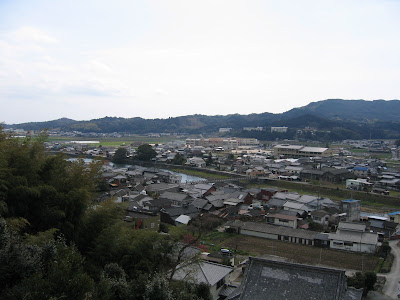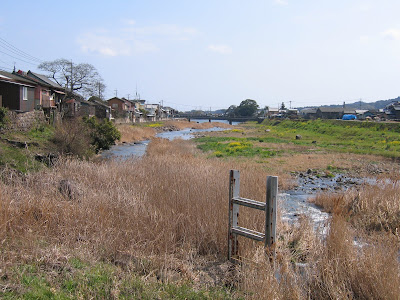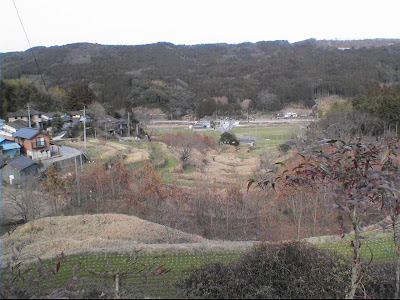Living in Japan, I tend to spend a lot of time ordering books off of Amazon.com. And in deciding what books to order, I began to realize how helpful the reader reviews on Amazon are. And how frustrating it is when there are absolutely no reviews to go by; which happens a lot, if your tastes run to obscure historical books, as mine sometimes do.
Of course I was actively reviewing books on this weblog. But the more I thought about it, the sillier that seemed. I mean, here I was, spamming my friends, family, and loyal readers with book and movie reviews that they couldn't care less about. And then these reviews were sitting lost in some obscure corner of the internet. Whereas I could be posting the reviews directly to Amazon.com, where people who actually wanted to read them could have access to it.
I had already been in the habit of getting double mileage out of some of my political book reviews. Anything- that- touched -on- radical- politics- I- would copy and paste and send over to Media Mouse for their book review section (after editing out most personal tangents or long bloggy ramblings).
I decided it would be easy enough to start doing the same thing at Amazon.com.
From February 17, 2007 ("Revolution and Reaction") to September 21, 2007 ("Tales from Earthsea"), every book or movie review that was posted on this blog was also copied and posted over on my Amazon account.
After September 2007, I decided the whole thing was causing me more headaches than it was worth.
I don't know how many of you have been Amazon reviewers at one point in your lives, but it's quite a system they've got going there. Not only can you review books, but people can review your reviews. After you post your review, people vote on whether it was helpful to them or not helpful. These votes are tabulated, and help to determine your "ranking" as an Amazon reviewer. You move up and down accordingly.
What's more, people can comment on your reviews. And then people can even vote on whether the comments were helpful or not.
If you're the kind of person who probably spends too much time online as it is, or if you check your e-mail obsessively several times a day, then all these bells and whistles can represent another huge time waster that it is all too easy to get sucked into.
In spite of my best efforts at self-control, I found myself checking my Amazon account once a day or more to see if I had gotten any more "helpful" votes. Or if someone had left a new comment.
That was my first problem with Amazon.
Secondly, and somewhat more depressing, my reviews by and large tended to get really slammed by the Amazon community. I'd put up a review, and soon find that 3 out of 3 people (or sometimes 20 out or 23 people) voted that it was unhelpful. It was a humbling experience.
When you spend too much time immersed in your own blog, acting as your own writer, proofreader, editor, and publisher, it is perhaps too easy to forget what a crum writer you really are. But when you're one reviewer among many, you can see your shortcomings quite clearly. Most of the other amateur reviewers had a lot of insight that I lacked, as well as a writing style that was a lot clearer and more concise than my own.
Still... "unhelpful"?
"This book sucked!"--That is the kind of review that is unhelpful. "It was good, but not as good as the movie."--That kind of review is unhelpful.
I at least would try and summarize the plot and give my reaction to it, which, I like to think, agree with me or not, would be at least somewhat helpful to a potential buyer trying to decide whether this book was up their alley or not.
If you decide my review doesn't deserve a "helpful" vote, I can accept that. But going out of your way to give me an "unhelpful" vote seems a little harsh.
But what was discouraging was that in some cases I would garner more "unhelpful" votes than some of the one line reviews mentioned above.
Of course it wasn't all bad. As of this writing, my Amazon profile lists a total of 125 helpful votes against 122 unhelpful votes, so in the end I ended up with a slight advantage in the helpful column.
Furthermore, I even got a bit of positive feedback on some of my reviews. My review of Lissagaray's "History of the Paris Commune" got several helpful votes, and a nice young man even commented: "Wish I could give you like 3 helpful votes for this awesome review. ;) " Bless you, sir.
However, in other corners I managed to get some people very upset. My review of the "Death Note" movie touched a off a nerve in the Anime community.
It wasn't overwhelming by any means, but in the first few months after I posted the review I would get about one negative comment about it a month.
First off was from a gentleman named Woopak
You are entitled to your opinion. Quite frankly, I don't agree with your view of the film. Aside from your view of vigitilantism, it deals with the issue of near-limitless power in matters of life and death. Death Note reflects on how power can corrupt a human mind. The human mind is unpredictable, how would you know how a live college student would react? Light was in Law school, not a teen-ager! In Asia, when you're in law school, means you are over 22 yrs. old. Plus, you took the film too seriously. This is a supernatural fantasy. Hey, Pirates of the Caribbean was a fantasy, and you didn't get all analytical with that. You want to watch Foreign films, learn to approach it with more acceptance and always put in consideration the source material.
I thought it was well-done. I liked the way it dealt with the battle of wits between good and evil.
Sorry, I definitely do not agree with your rating in your review and your understanding of the film. DEATH NOTE kicked the heck out of most Hollywood thrillers...!
A few months later, Neil Ford chimed in:
Most Japanese cinema does NOT start out as manga!
Followed up closely by Woopak once again:
I agree with Neil Ford. Don't underestimate Japanese cinema. It has influenced a lot more films made in Hollywood than you'd think. (Example: Kill Bill, The Matrix, The man with no name trilogy(spaghetti westerns), Magnificent Seven)
As with super-hero films (like Spider-man), manga just moves on to another medium such as film.
And finally Mr. Advo Asks:
Awful review... lemme tell you why...
Teenager? Like someone already said, Light is studying Law in Uni. Of course, the anime DOES start with Light as a senior in high school, but we're not reviewing the anime here, and even if we were... This isn't just some green kid picking up something he can't understand. It's the (precocious, as the author already stated) son of a well-respected, highly ranked member of the police force... the top of his class, studying relentlessly to fulfill his already strong dream of delivering justice to the wicked. A genius with high expectations of himself, who is disgusted with the state of the world's rotting virtues.
So with that in mind... say again how it's difficult to imagine that he would actually take on the responsibility of ridding the world of scum? Besides, much of the reason that Light doesn't stop killing is that he CAN'T stop killing without increasing suspicion. Continuing the spree of murders is a way for him to continue his important work, sure, but if he can continue killing while appearing innocent, that should lead suspicion elsewhere. So for him, there is no choice BUT to keep killing. [This intention is present in the film, but probably more evident in the anime.]
(By the way, there is no evidence to support that L is supposed to be a teenager either.)
The complaint that real life would provide fewer criminals to kill is way off. Certainly Light goes after unpunished criminals, but he also attacks those who have already been incarcerated... and given the many millions of prisoners around the world... he would't run out of victims for ages.
The author is certainly right that the story was better in anime format (I don't read comics, so I can't speak for the manga), which I will discuss at some length in a review I'll be writing shortly. Unfortunately, this film wasn't great, but I think so for reasons other than Swagman. His review was written with a minimal amount of understanding of Japanese cinema (see review's first sentence), incorrect interpretations of the film's facts and implications, and a ridiculous amount of prejudice and inappropriate comparisons (hitchcock, kill bill, .the last supper). "Was this review helpful to you?"... No, not at all.
Now, it must be admitted there are some valid points in here. Perhaps I was a bit too dismissive of "Death Note" in my original review. And the fact that I had watched this film in Japan means that I did it without the benefit of English subtitles, and was only able to catch as much as my limited Japanese ability would allow. Therefore some of the more subtle plot points these reviewers mention went right over my head.
Still, there were many areas where I believed I was being unfairly criticized. And I began to formulate in my mind all the ways I could respond to these attacks if I were so inclined.
Despite the fact that they seemed to want to draw me into a debate (Mr. Woopak even went through the trouble of commenting twice) I held off responding for several months. After all, I had promised myself I wouldn't let my activities on Amazon become yet another Internet drag on my time. I had said my piece in the original review, and that's all I was going to do. You can't get let yourself get drawn into a huge debate with every anime fan who has Internet access.
My resolve gave in one day when I found myself unemployed. I had a million things I should have been doing, and I was trying to think of an excuse to avoid all of them. I went on a long walk to get some exercise, and found my thoughts drifting to the 3 anime fans whom I had angered with my review. By the time I had finished my walk, I had already mentally composed my entire response. And so at that point I decided to just write it up.
Dear Woopak, Neil Ford, and Advo Ask,
thank you for taking the time to read my review, and giving me your feedback. It has also been interesting to read some of your thoughts on this movie over the last few months. When I posted this review a few months ago, it was the only one. Having read your reviews has helped me to understand this movie a little better, and I probably would have written this review a bit differently if I had read yours first.
We might have to agree to disagree on some of the thematic issues of this film, but I'll start with some of your more concrete objections first of all.
1) Most Japanese cinema does not start out as Manga
2) Light is not a teenager
1). I might be talked into admitting that I've overstated this point. Certainly this wasn't true in the days of Kurosawa, but having lived in Japan for the past 7 years, it certainly feels like most of the big hit movies during that time have some sort of Manga connection. Even a lot of dramas like "Go" or "Always" turn out to be based on a manga in the end, not to mention all more obvious manga derivations (Devilman, Cutie Honey, I could go on). If we throw in movies based on TV shows and anime, I'd be willing to place a bet that this accounts for most of the big budget Japanese movies in the past 5 years, if not most of the recent Japanese movies period. But I've not done a formal study on this, and am open to be convinced otherwise.
2).I wrote this review directed at the average American who knows nothing about this franchise, so I tried to give a brief overview of both the manga and the movie. I knew from discussions with Japanese friends that the manga character starts out as a high school student. In the movie he was in law school, so certainly not in high school anymore and unlikely to be a teenager. I'm not sure if the movie ever clearly states his age, but if you read my review carefully, you'll notice the only time I refer to Light or L as teenagers is when I'm referring to the story behind the manga-anime-movie adaptation, not the movie itself. That was an intentional choice of words on my part, intended because I didn't really know how old he was in the movie.
Upon re-reading my review, however, I can see how this kind of semantic hair slicing can be easy to miss, especially if you're reading it through quickly.
Allow me to suggest, however, that regardless of whether light is a teenager or not, or whether most Japanese cinema is based on manga or not, that both of these are extremely minor points in my review, and I think an undue amount of attention has been focused on both these areas at the expense of ignoring some of my broader points, and that this kind of nit-picking is not always helpful for moving the discussion forward.
Thematically I stand by much of what I said in this review, although, Woopak, I have read your review as well and I can see where you're coming from and respect your opinion. I guess for me the big issue is not only what themes does the film attempt to address, but how well does it succeed in dealing with those themes. I will admit that this film takes on some pretty ambitious themes, as you mentioned in your review (death penalty, power corrupts, man playing god). For me though the film didn't really give me any new insight into any of these themes, and I'm not convinced the film quite pulled off what it set out to do.
I'm not sure the comparison with Pirates of the Caribbean is entirely apt. After all, as you mention in your review this film attempted to deal with a number of themes that Pirates of the Caribbean never pretended to address. And given how little action there is in this film, it would be hard to compare it to a mindless action fantasy like Pirates of the Caribbean was. A suspense movie maybe, but I tend to judge those by different standards than summer popcorn movies.
I do agree that people are unpredictable, but (as a literature professor of mine once said) they should be written so as to have a predictable unpredictability. In other words, the human mind as unpredictable shouldn't be a catch all excuse for any jump the writer wants to make.
Advo, I'm not entirely sure why my comparisons to Hitchcock, Last supper, and Kill Bill were inappropriate. In the case of Kill Bill for example the only reason I even mentioned that film was as another film that was released in two parts but as a continuous story split into two instead of as a standard sequel. I guess I could have written all that out, but I think Kill Bill is a nice short hand way of conveying the same thing to an American Audience. Last Supper, well admittedly not the greatest film in the world, dealt with a lot of the same themes and I'm not sure why it's not appropriate to make the comparison.
Also I'm not sure why you would say my review has a ridiculous amount of prejudice. Perhaps you could explain that one to me a little more.
That said, I did read with interest your theory that Light had to keep killing in order to appear innocent. This was something I didn't quite catch when I watched the film, but your explanation does make a bit of sense. I still think it would have been much easier to just walk away from the whole thing, but then we come back again to the unpredictability of the human mind.
PS--I'd be interested to hear what you guys thought of Death Note II. Although I see Woopak incorporated elements of both into his review, the last I checked I was the only reviewer on the Death Note II page. It would be nice to get some more opinions over there.
Given how much they had jumped all over my original review, I took a bit of pleasure in writing this as an attempt to get them all stirred up again. I was sure that within days they'd all be writing long responses. But no-one ever wrote a reply.
Instead, the only feedback I got was that 2 people voted my comments did not "add to the discussion". (Come on! Disagreeing with it I can understand, but how does this not add to the discussion. Blast you anonymous Amazon voters!)
Addendum: Actually I should modify one thing slightly. During my time as an Amazon reviewer, I didn't repost every review on Amazon. I tried to post every review. For whatever reason, some of my reviews would mysteriously disappear after a day or two.
At first I thought this was some sort of censorship whenever I expressed unorthodox opinions, but after a while I decided it was probably some sort of bug in the program.
After reposting a couple of reviews several times, I just decided to leave it. In an effort to avoid spending all day on-line, I decided to make one and only one attempt per review.
There were some interesting catches in the Amazon program, however. For whatever reason, anytime I tried to make reference to the age of a character it would get automatically edited out of the review. Compare, for example, this strangely edited review of "The Golem's Eye" with my original here. A safety device to protect minors, perhaps?
For anyone interested, my Amazon profile with all the posted reviews and helpful/unhelpful votes can be found here.
Link of the Day
Chomsky: No change coming with Obama. With Afshin Rattansi. January 24, 2009.
Also of interest: Christopher Hitchens on Billy Graham, $cientology and religious hypocrisy (Billy Graham was someone my Christian school teachers were always praising growing up, but Christopher Hitchens really lays into him hard here).


